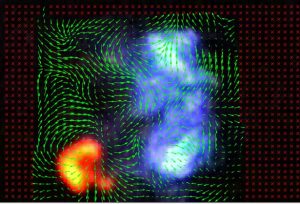(Flame Image Velocimetry (FIV
Combustion, whether at high speeds and temperatures or at medium speeds and temperatures, emits large amounts of radiation, many of them are in the visible region. Therefore, there is no need for special tools to observe the movement of combustion flames and it can be seen with the naked eye and can be recorded with visible cameras. Flame Imaging Velocimetry (FIV) technique is very similar to Particle Image Velocimetry (PIV) method and even uses the similar algorithms for analysis, except that it is much easier to implement. This method instead of seeding external particles or illuminating a laser beam into the flame, uses the light from the flame itself to obtain the velocity field. Therefore, no need of particles, lasers, and special devices in the FIV saves time and money. One of the key features of FIV is obtaining the amount and direction of flame velocity vectors at the same time.



If there is an urgent need for flame velocity vectors, this method is certainly more cost-effective and easier than other methods and provides relatively good results.
